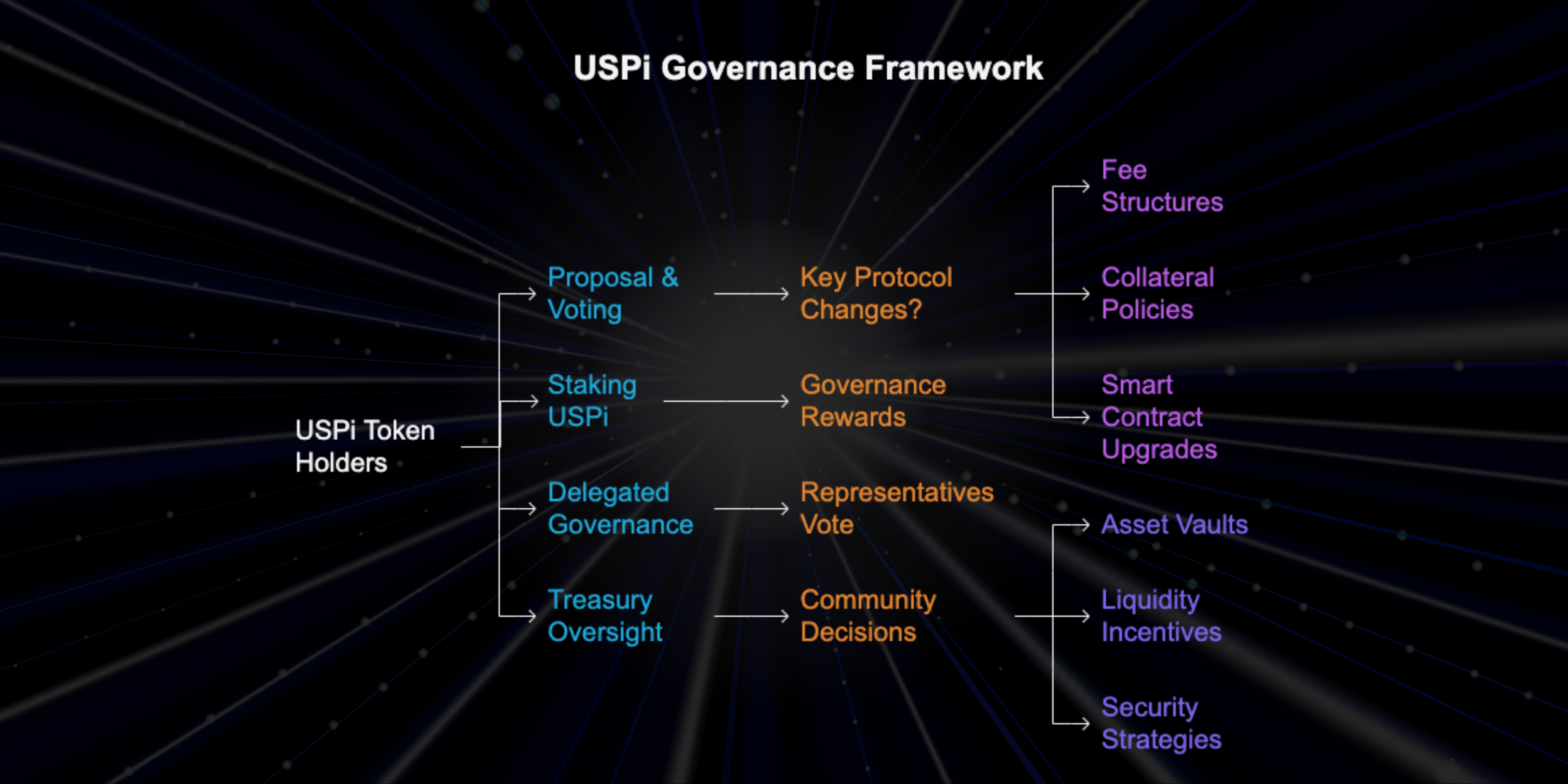Role of USST in Governance

The USST token is the core governance asset of STBL, empowering holders to participate in protocol decision-making, treasury management, and ecosystem growth. It ensures a decentralized and community-driven governance structure, giving users control over key operational aspects.
1. Governance Participation through USST
USST token holders can:
- Propose and vote on key protocol changes, including:
- Fee structures for minting and staking.
- Collateral policies for RWAs.
- Smart contract upgrades for enhanced security.
- Stake USST to participate in governance and earn a share of protocol rewards.
- Delegate voting power to representatives, enabling a liquid governance model where decisions reflect community interests.
This governance model ensures transparency, decentralization, and long-term sustainability.
2. USST Staking & Voting Power
Governance participation is incentivized through a staking-based voting model, where:
- Users can lock USST tokens to earn higher voting power and governance rewards.
- Time-locked staking derivatives (sUSST) amplify governance influence, granting multiplied voting rights based on lock-up duration.
This approach aligns long-term token holders with the protocol's success, ensuring governance decisions prioritize ecosystem stability.
3. Treasury Oversight & Community Control
A portion of protocol fees and revenue is allocated to a community-governed treasury, which is managed through USST governance votes.
- The community decides on treasury allocations for:
- New asset vaults and ecosystem growth.
- Liquidity incentives for stablecoin adoption.
- Protocol security and risk management.
Through this DAO-driven financial oversight, STBL ensures transparent fund distribution and long-term sustainability.
4. Decentralization through Delegated Governance
To ensure broad governance participation, STBL allows delegated staking, where:
- Users can assign their voting power to trusted representatives.
- Delegates actively vote on behalf of the community while maintaining decentralized decision-making.